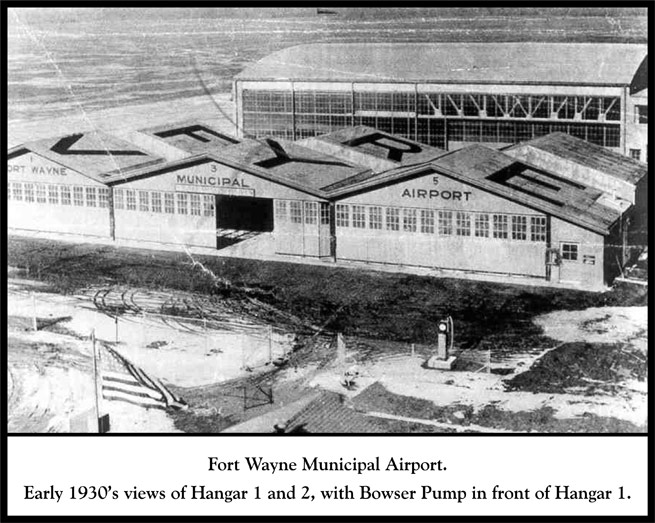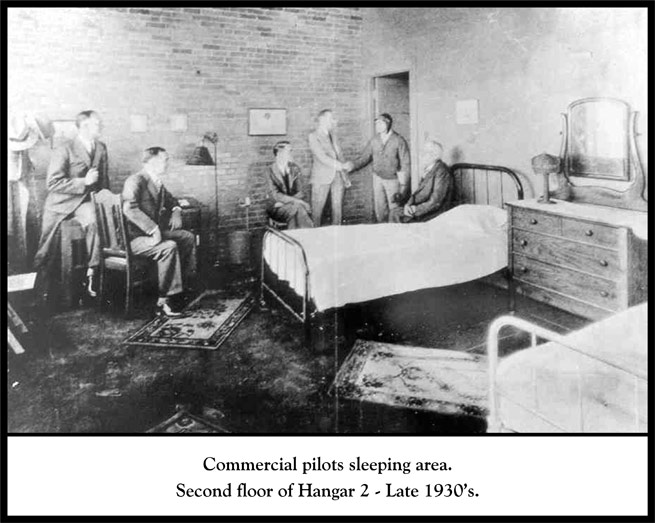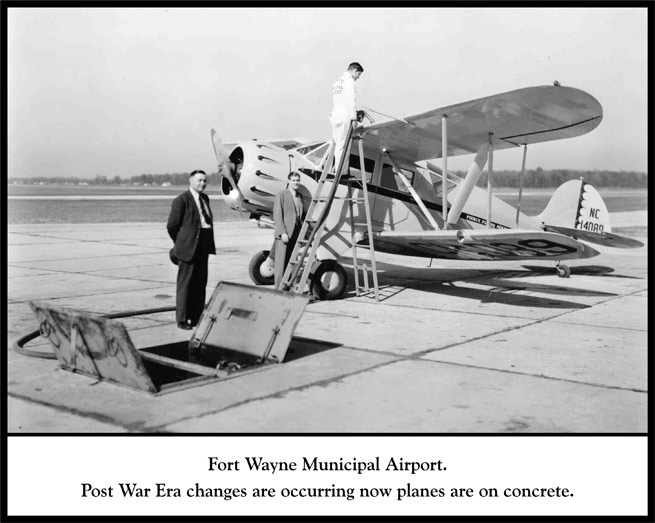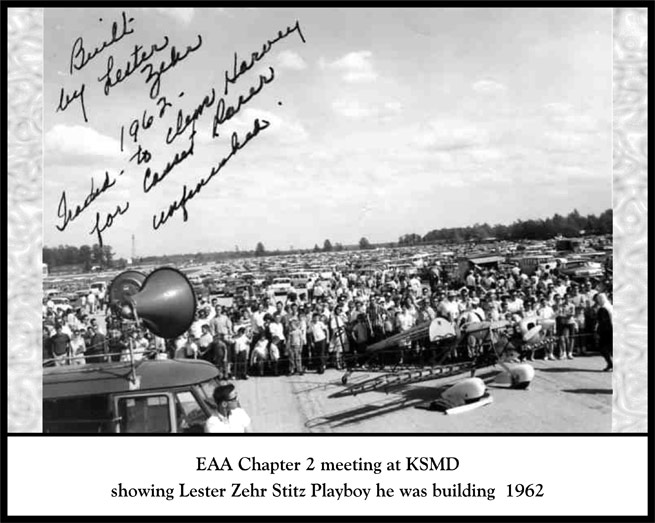Historical photos provided by EAA Chapter 2.
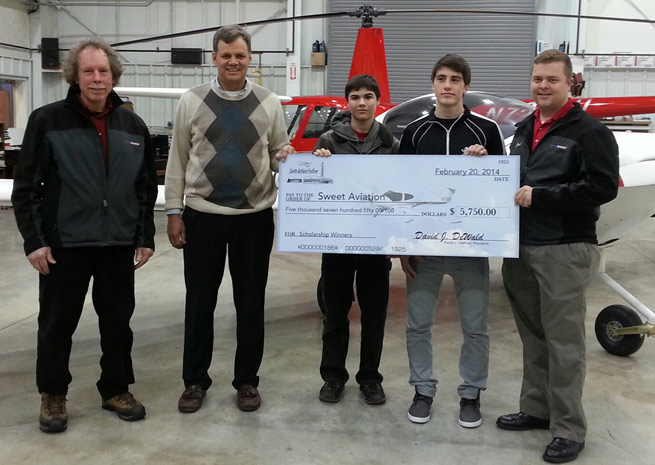
Two teenagers, two dreams: Andrew Griffith wants to be a missionary pilot or mechanic, Rigel Jaquish possibly an airline captain. An army of pilots and airport supporters is helping to make those dreams come true. They are training at Smith Field (SMD) in Fort Wayne, Ind., but there would be no airport for them to train at if it weren’t for years of advocacy by local residents and pilots.
The airport, also known over the years as Baer Municipal and Fort Wayne Municipal, has withstood three separate attacks—in the 1970s, 1990s, and 2002—to close it and redevelop the land, according to local pilots. Funds remaining from the latest effort to save the airport were turned into a $5,750 scholarship for the teens to train toward private pilot certificates. In a scholarship presentation earlier this year, Smith Airfield Forever (SAFE), a nonprofit airport support group, ceremonially closed the book on the effort to save the airport by investing in these students’ dreams and supporting general aviation.
Smith Field has enjoyed strong community support since its dedication in 1925, the same year it hosted an airshow that drew 50,000 spectators to the field. In the early 1930s, the airport buzzed with mail service operations and later airline service. The twin-engine UAV, the Interstate Aircraft TDR-1 Assault Drone, was produced in the airport's Hangar 2, according to the National Park Service. And it's a reliever for Fort Wayne International and home to Experimental Aircraft Association Chapter 2. Throughout the decades, Fort Wayne residents have frequented the airport, watching aircraft take off and land, having picnics, or going for flights. Despite the strong community support, the city’s mayor tried to close it in the 1970s, and the Fort Wayne-Allen County Airport Authority tried to close it in the early 1990s. That effort was postponed by a 10-year moratorium. As soon as the moratorium was up, the airport authority voted to close the field in 2002.
Protecting a historic gem
“You ask 12 people what saved it, you’d get 12 different efforts,” said Marcus Brewer, vice president of SAFE. Two airport groups formed to help save the field, SAFE and SMD Fund. Some say that politics were at the heart of the effort to close the airport, and that politics were what ultimately saved it. Others credit the community’s outpouring of support—signing petitions in favor of the airport, writing letters to the editor, and displaying “We support Smith Field” yard signs and stickers on their cars. “You just start[ed] seeing a grassroots movement,” said SAFE President David DeWald. Still others point to the multiple lawsuits filed to keep it open, and the airfield being added to the National Register of Historic Places.
Supporters dispelled myths that the airport was only serving weekend flyers by documenting the number operations each day: The Indianapolis Colts flew their helicopter in, the Air National Guard landed there, and business executives flew in regularly.
“This was the on-off ramp to the airport expressway,” said airport supporter Norene Brown.
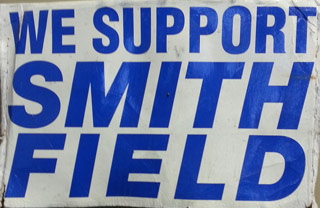
AOPA’s Airport Support Network volunteer at the time, Ken Russell, was instrumental in helping AOPA work with the support groups at Smith Field. The association’s airport advocacy staff and then-AOPA President Phil Boyer made trips to Fort Wayne to meet with supporters and city officials. In March 2003, the airport authority overturned its decision to close the airport. The vote came just a few months before the airport was slated for closure.
“I will not say that any one group 'saved' the field, but I am confident that it would not have been saved without multi-faceted efforts,” Russell told AOPA via email. Russell served as the Airport Support Network volunteer at the field until he accepted a job with the city of Cedar Rapids, Iowa, five years ago. “The political will of the airport authority to close the airfield was very strong. I am very glad that the battle is in the past and that the airport did not close.”
Scott Noble, a member of the SMD Fund, the other pivotal airport support group, said, “Some people have to take a stand once in a while. There’s been a lot of good here.”
The battle took a toll on the airport community. Smith Field’s current Airport Support Network volunteer Craig Brown and his wife, Norene, still have the “We Support Smith Field” yard signs; many, if not all, of the letters to the editor and newspaper article clippings; and well-preserved Smith Field Forever sweatshirts. While the Browns and other airport supports speak proudly of the effort to save the airport, the turmoil they faced when fighting for the treasured airport is still evident in their voices.
Joe Tocci, one of the staunch supporters in the SMD Fund, rarely visits the airport, even though the pilot community is welcoming. Tocci had moved to Fort Wayne with the dream of retiring near Smith Field, building his own airplane, learning how to fly in it, and then mentoring children. He has put that dream on hold and encourages a new generation to take up the fight to continue protecting the airport—and aviation dreams—for others. “It’s up to you guys now,” Tocci told EAA Chapter 2 President Kevin Stahl.
Carrying the torch
Stahl and Joel Pierce, general manager of Sweet Aviation, the fixed-base operator on the field, are two forces working to move the airport forward.
Stahl, along with EAA volunteers like Laramie Resler, who leads four Young Eagles events at the airport each year, and former EAA Chapter 2 President Dan Leonard, keep children and families coming out to the airport. “It gives kids a taste of what flying is like,” Resler said, and offers “goodwill for the community.” In the past two years, the group has given more than 2,300 Young Eagles flights at Smith Field.

Pierce came to Smith Field in 2007 and trains flight instructors and students, is developing ways to get rusty pilots back in the left seat, and invites the media to the airport for special occasions, all in an effort to keep the airport community friendly. Sweet Aviation now has a Diamond DA40, three Diamond DA20s, a G1000-equipped Cessna 172S, a Cessna 152, a Piper Arrow, and an Enstrom F-28F helicopter, according to the school’s website. The expansion at the FBO and airport has been exciting for Pierce. “I think that it’s part of the dream coming true for me in my career,” said he said. “I believe in community for a general aviation airport like this.”
The “airport authority has gotten behind [the airport]” and invested in it, according to DeWald. “We have a responsibility to keep this airport viable, and we’re going to,” said Craig Williams, director of operations for the Fort Wayne-Allen County Airport Authority. “We’re fans of GA. We grew up in GA.” Williams acknowledged that after the history of the airport authority’s repeated attempts to close Smith Field that it will take “a while to build that trust up again” but added that the authority is trying to show its commitment with actions to improve the FBO, runways, lights, and taxiways.
A new terminal has been built, and new, insulated T-hangars with concrete floors (rented for a locked-in $200 a month) have attracted new tenants to the airport. Pilots based at Smith Field have their aircraft maintained on the field at Sweet Aviation’s maintenance facility that opened less than a year ago.
Ivy Tech Community College expanded its aviation maintenance technology program at Smith Field and now has a new 21,000-square-foot aviation center, “which allows room for the full fleet of aircrafts used in the Aviation Maintenance Technology program,” according to the college’s website. Aerial power line inspection and maintenance company Haverfield Aviation has a regional office based at Smith Field. Business aircraft also are housed at the field.
It’s not just business that’s buzzing at Smith Field nowadays. So are the social opportunities, just like the days of old. Pilots gather for fly-outs, offer Young Eagles flights, sit at their hangars and watch takeoffs and landings, and host cookouts. Community residents picnic at a patio outside Sweet Aviation that overlooks the airfield. “That life is back again,” Leonard said. This time, it appears to be back for good, helping make the dreams of the next generation, like Griffith and Jaquish, come true.






